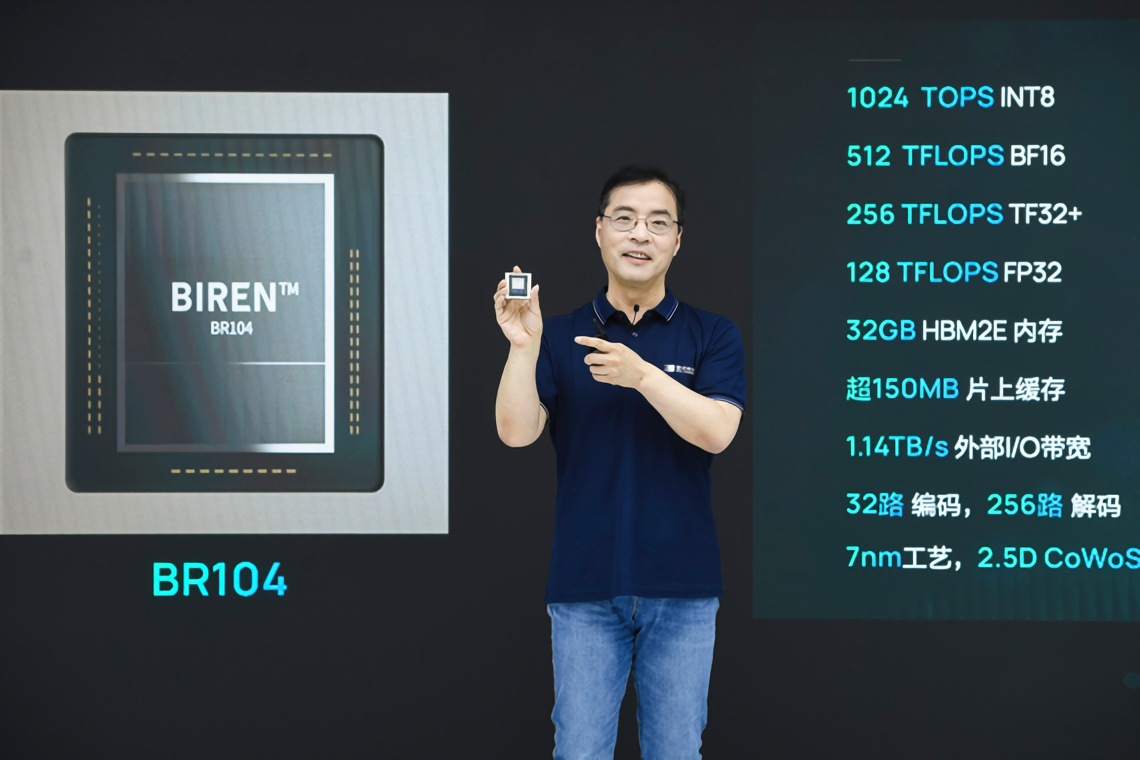
While we wait for Intel to confirm the launch of its ARC Alchemist for the Spanish market, we find that we could see a fourth competitor in the market and it would not come from the United States as is the case with NVIDIA, AMD and Intel, but from the other superpower, that is China and no, we are not talking about the Fantasy One, but about birena manufacturer from China that at the moment focuses on artificial intelligence and data centers.
The evolution in recent years in terms of graphics chips, if we exclude AMD from the equation, is to include units in their cores to accelerate the parallel execution of artificial intelligence algorithms. Said elements, called according to each brand with the name of Tensor Cores, Matrix Units or any synonym. This has meant that, as happened with scientific computing, they have reached new markets. However, these technologies are having their application in games and other applications, both domestic and professional.
Why is Biren a potential threat to NVIDIA, AMD and Intel?
A few weeks ago the Chinese hardware designer Biren showed his BR100, a brown beast of 77,000 million transistors and, therefore, with the same complexity as the RTX 4090, however, it is not a card designed for graphics, but rather it is focused on the AI market and lacks the fixed function units for graphs. So in that aspect it’s similar to AMD’s CDNAs, with the difference of using systolic arrays, so it’s a torpedo to the waterline of NVIDIA with its H100 and Intel with Ponte Vecchio.
Biren’s most advanced configuration is made up of two GPUs and their respective HBM2 memories in their interposer, a very common configuration in server graphics cards. It is not a disaggregated chip, in fact, there is a configuration with a single graphics chip called BR104. Although of course, what is striking is its performance. The total power of the systolic arrays of the BR100 allows it to reach 2 PetaFLOPS of power or, in other words, 2000 TeraFLOPS operating in 8-bit floating point. The power of the NVIDIA H100 chip? 3 PetaFLOPS.
However, it is the 32-bit floating point power that draws the attention of the made in China GPU, with a total of 256 TFLOPS in total, 128 TFLOPs per chip. Which means that China has its own architecture that has all the capabilities to have a derivative for games. All this on a chip manufactured under TSMC’s 7nm node and using the same CoWoS technology as AMD’s Instinct MI200.
And what about the graphics card for gaming?
It would not cost the Chinese company anything to modify its architecture to launch a gaming version of its GPUs, however, we have to see if the United States is not against using more advanced nodes than TSMC’s 7nm, since that with these densities the size of the chips and the cost is prohibitive for the domestic market. However, the changes they should make are simple:
- Added fixed function units:
- Rasterizer.
- Textures.
- ROPS.
- Ray tracing.
- Advanced hardware video and audio codecs.
- Use of GDDR6 memory instead of HBM2 to cut costs.
In conclusion, China already has the tools to launch its own graphics cards and do without the American companies in that aspect, for the moment with respect to artificial intelligence in servers, but at the same time they have everything they need to launch their own range of gaming graphics cards in the near future. Are we going to see a fourth competitor in the market? At the moment the only Chinese product is the Fantasy One based on PowerVR technology, but they do not reach the level of power necessary to cough up NVIDIA and AMD, which Biren’s architecture does.
However, the drivers will not make it easy
And it is that the biggest problem when making a graphics card for gaming is not only the hardware, but the drivers. But they ask any of the three manufacturers who have sweated hours of work to get decent drivers and even so in some cases there is still a titanic job to do. So it is not limited only to the hardware part, but also to the software, which over time has become equally important to ensure the good performance and success of a gaming graphics card.




